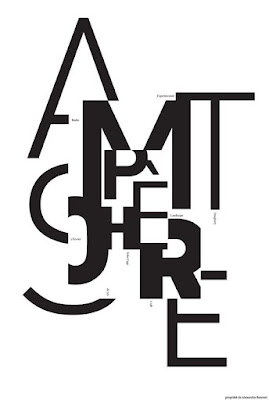Research:
Massimo Vignelli:
Massimo Vignelli was an Italian designer who worked in a number of areas ranging from package design through house-ware design and furniture design to public signage and showroom design.
Vignelli is famous for sticking to a handful of typefaces preferring only six.
“timeless, legible, and elegant”
Vignelli stated that “type is important…but structure should always come first.”
'He expounds on his philosophy in Canon:
As I said, at the time, if all people doing desktop publishing were doctors we would all be dead! Typefaces experienced an incredible explosion. The computer allowed anybody to design new typefaces and that became one of the biggest visual pollution of all times. …
I still believe that most typefaces are designed for commercial reasons, just to make money or for identity purposes. In reality the number of good typefaces is rather limited and most of the new ones are elaborations on pre-existing faces. Personally, I can get along well with a half a dozen, to which I can add another half a dozen, but probably no more. Besides those already mentioned, I can add Optima, Futura, Univers (the most advanced design of the century since it comes in 59 variations of the same face), Caslon, Baskerville, and a few other modern cuts. As you can see my list is pretty basic but the great advantage is that it can assure better results. It is also true that in recent years the work of some talented type designers has produced some remarkable results to offset the lack of purpose and quality of most of the other typefaces.'
(https://fontsinuse.com/uses/14164/massimo-vignelli-s-a-few-basic-typefaces)
Helvetica:
- Developed in 1957 by Max Miedinger with Eduard Hoffmann at the Haas'sche Schriftgiesserei (Haas Type Foundry) of Münchenstein, Switzerland.
- Sans-serif typeface that could compete with the successful Akzidenz Grotesk in the Swiss market.
- The aim of the new design was to create a neutral typeface that had great clarity, no intrinsic meaning in its form, and could be used on a wide variety of signage.
- Neutraility - no meaning - based on the idea that type itself should give no meaning.
- Simple
- Wide spread use
- Associated with corporate culture and business to some degree
- Adaptable
- Legible
Technical Details:
- Helvetica’s characters always have vertical or horizontal terminations on their strokes, never diagonal.
- Helvetica is as much about the negative space surrounding the letters than about the lines that make up the characters themselves.
- The negative space contained within the lowercase “a” closely resembles a teardrop.
- It has monotone stroke weights.
- It remains legible when in motion, one reason it’s popular for signage and automaker and airline logos.
Futura:
- Futura is a geometric sans-serif typeface designed by Paul Renner and released in 1927.
- It is based on geometric shapes, especially the circle, similar in spirit to the Bauhaus design style of the period.
- It was developed as a typeface by the Bauer Type Foundry, in competition with Ludwig & Mayer's seminal Erbar typeface of 1926.
- An appearance of efficiency and forwardness.
- "the typeface of today and tomorrow"
- combination of classicism and modernity
- Popular
- Versatile
- Modern, clean, elegance
Technical Details:
- It is based on strokes of near-even weight, which are low in contrast.
- The lowercase has tall ascenders, which rise above the cap line, and uses nearly-circular, single-storey forms for the "a" and "g", the former previously more common in handwriting than in printed text.
I want to work with both typefaces as both are seen as legible and functional for a range of uses. I think it would be interesting to see if I could help to make these typefaces reflect the beauty in simplicity.

































